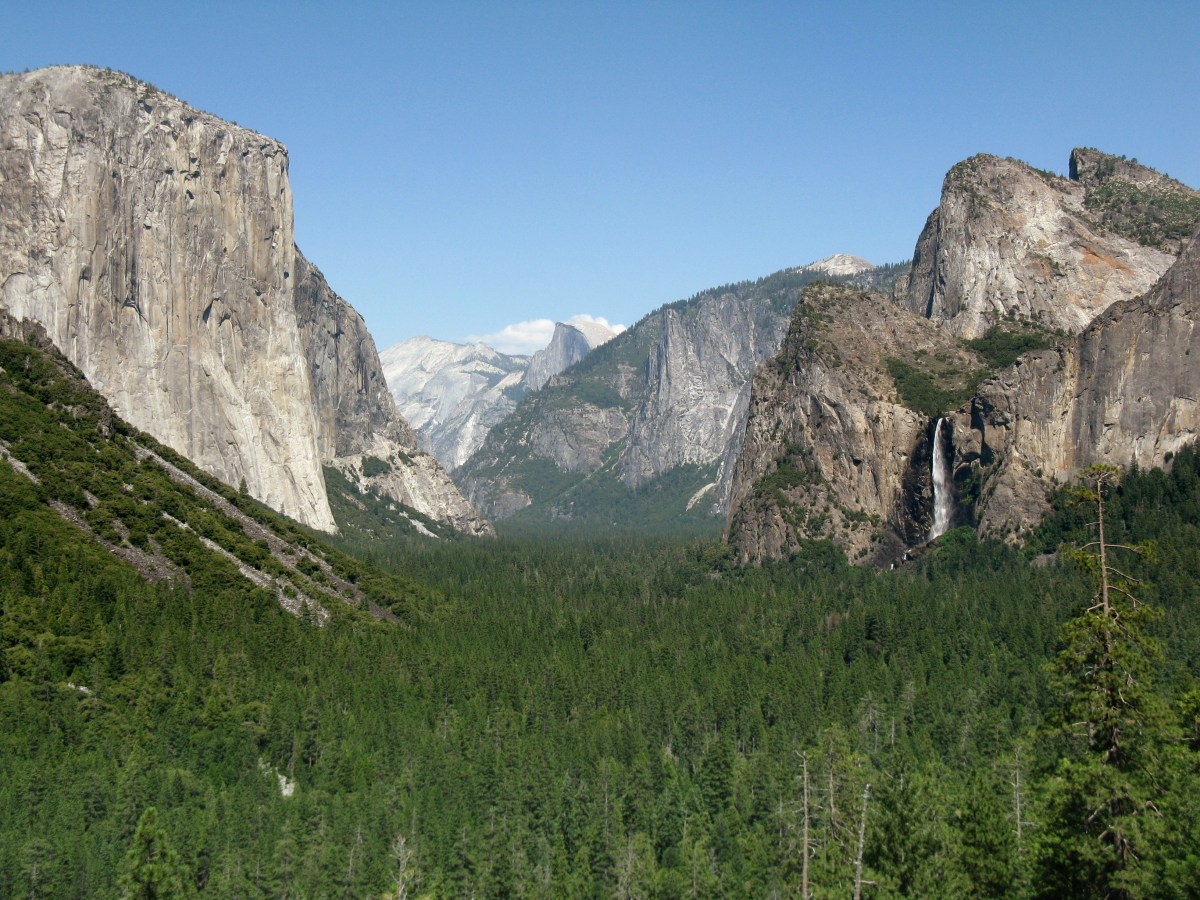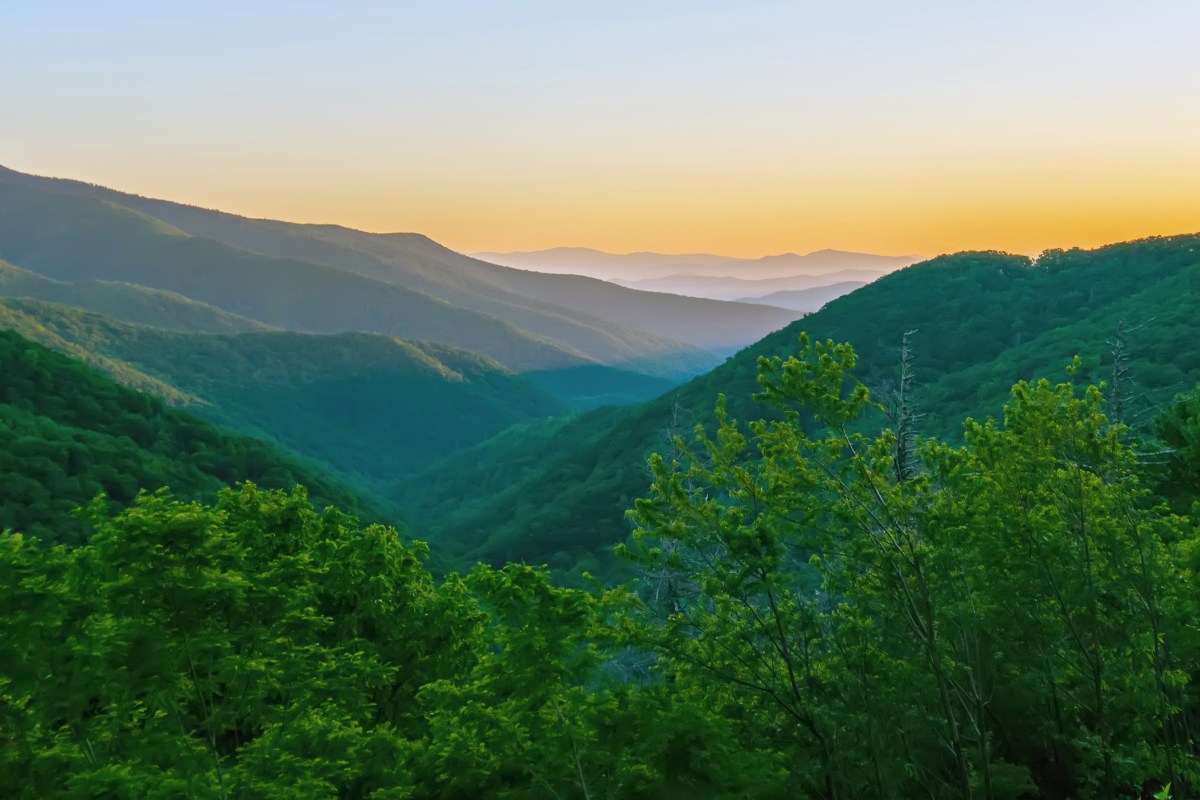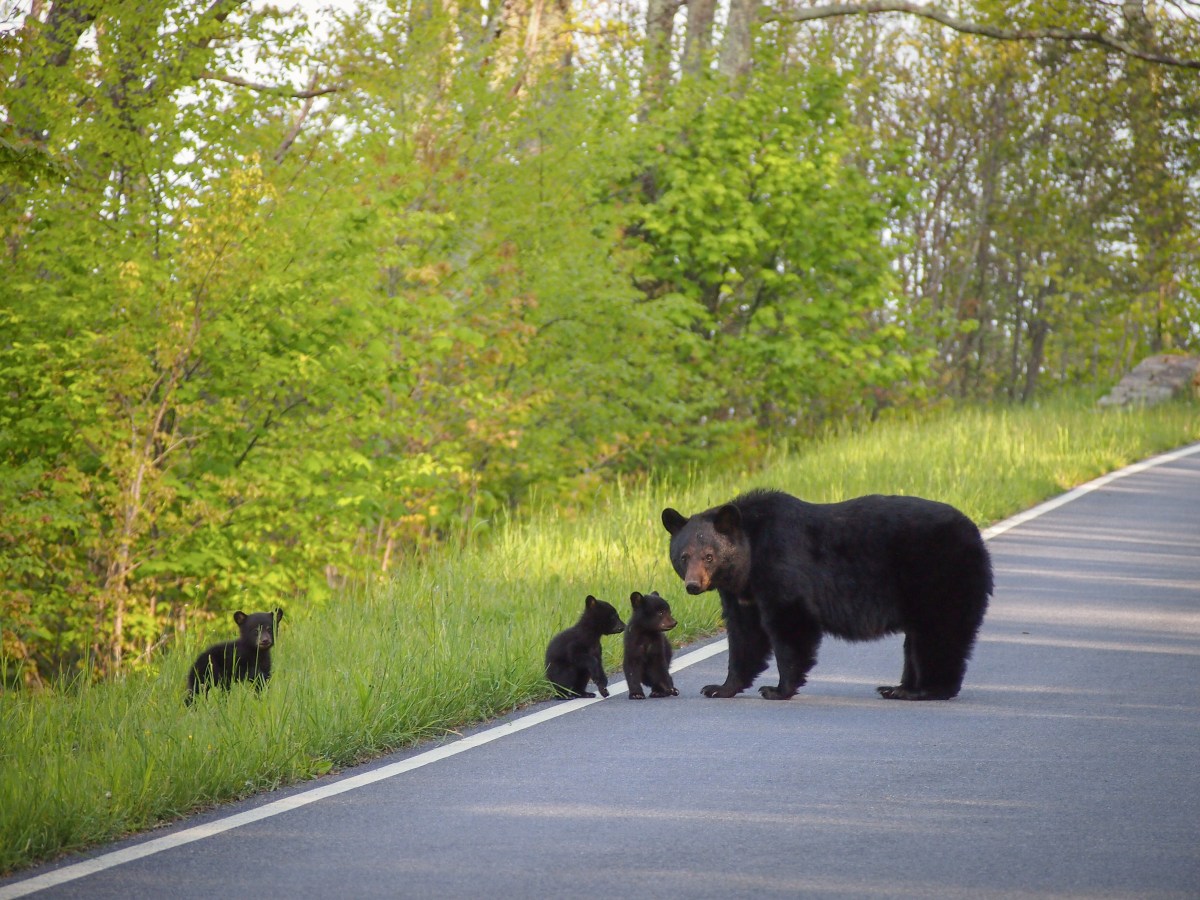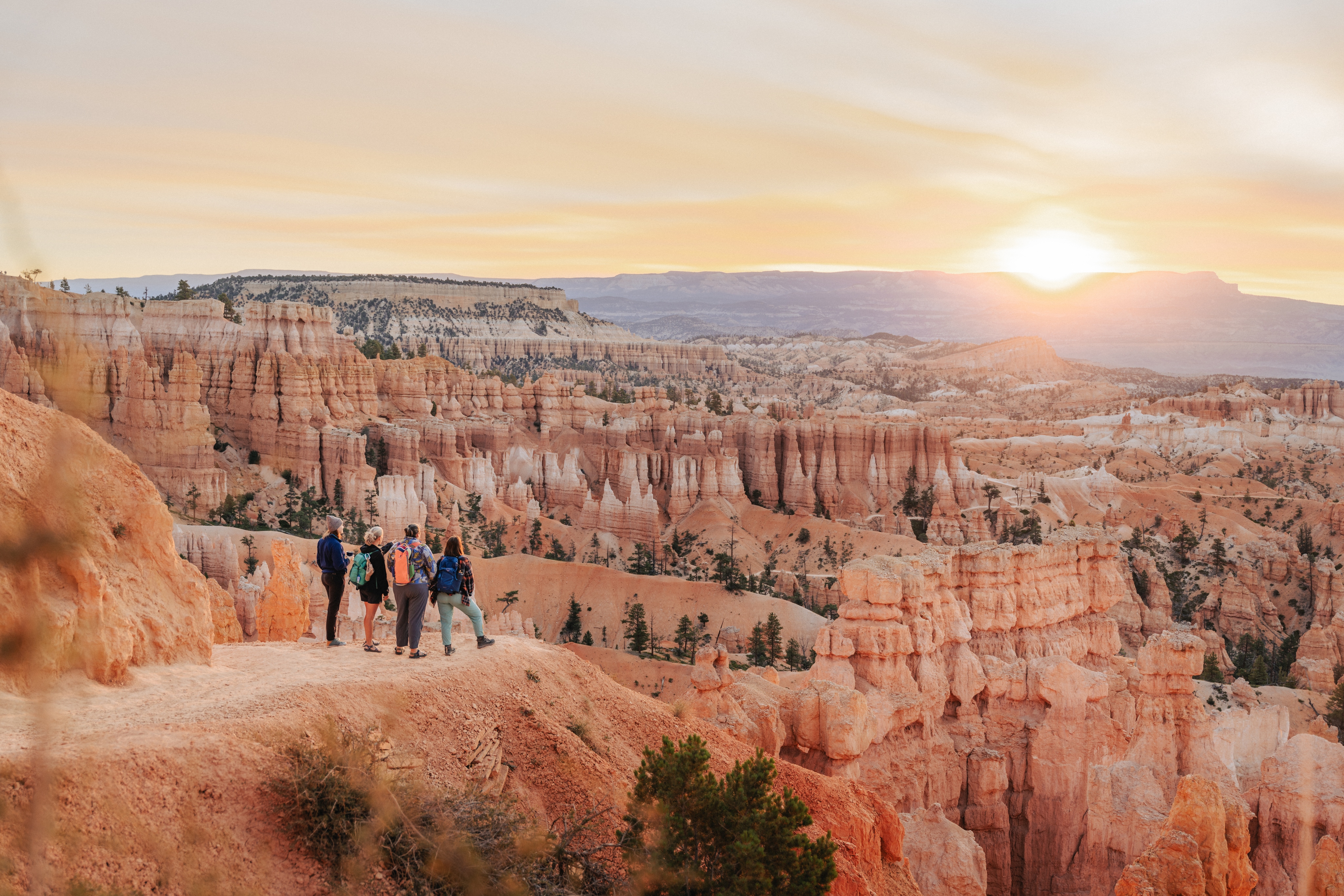In the United States, 63 national parks protect approximately 52.4 million acres of nature and wilderness. Within these natural spaces, visitors can explore breathtaking canyons; camp among towering pines; admire rushing waterfalls; and observe wildlife like bison, elk and moose. And an increasing number of people are doing just that.
“Over the past decade, many parks have seen significant increases in visitation and crowding in popular areas, especially during peak seasons,” says Dave Barak, public affairs specialist at the National Park Service. “Four hundred national parks reported a total of 325.5 million recreation visits in 2023—an increase of 13 million, or 4%, over 2022.”
Additionally, says Barak, 20 parks broke visitation records in 2023—including well-loved places like California’s Joshua Tree National Park and lesser-known sites like Florida’s Dry Tortugas National Park.
While it’s great that folks are getting out to these expansive parks, this increased visitation can make reserving a spot at some of the most popular locations challenging. And because each park has its own hours, permit requirements, booking windows and entrance fees, planning a trip can feel overwhelming. Not to worry. Here are tips for snagging entrance passes and coveted reservations at popular national parks.
No matter which destination you’re eyeing, planning ahead is essential. Here are some things to keep in mind before you go.
In this story, we’ll cover:

Reservations and permits
Before visiting a national park, research the permits and reservations required for your planned activities. For high-traffic parks like Great Smoky Mountains, Grand Canyon, Zion and Yellowstone—which each welcome millions of visitors annually—you’ll likely need some combination of trailhead permits, campground reservations and entrance passes. Some parks, like Yosemite, also require a reservation for entering the park. (More on this below.)
In comparison, some less-visited destinations, like Washington’s North Cascades National Park, which sees about 40,000 visitors annually, have free entrance all year. While this site requires permits for camping, it’s easy to snag a walk-up permit a day before your adventure. No in-depth strategy or months-in-advance planning needed.
Pro tip: A less-popular park doesn’t mean it’s less worthy of a visit. North Cascades National Park tends to be overlooked because it’s snow-covered much of the year and requires more skill, fitness and gear than others. For instance, while you can enjoy stunning views at a park like the Grand Canyon without much hiking, the North Cascades typically requires some trekking to view its breathtaking landscapes.

Campsite booking
Most reservable national park campsites have booking available six months in advance. This might seem like a long lead time, but if you’re planning your adventure for the busy summer season, you’ll need to secure your campsite at Recreation.gov as soon as the six-month window opens. For example, if you want to camp on Aug. 5, be sure to log on a few minutes before booking opens on Feb. 5 to snag a spot—people snap them up in seconds. (Fourth of July and Labor Day weekends are particularly difficult to book.) Set yourself an alert so you don’t miss out.
There are exceptions, however. Yellowstone, for instance, allows campsite reservations 13 months in advance and allows booking on the fifth of each month; Yosemite has a reservation system from April through October for 13 of its most popular campgrounds, with varying booking windows (some open as little as two weeks ahead). During winter, some of the parks’ campgrounds operate on a first-come, first-served basis, but spots fill up fast over holidays and weekends. If you can’t get a particular park’s reservation, check if first-come, first-served options are available.
Dispersed camping is an option if you don’t want to navigate reservation windows. Resources like private-campsite rental program Hipcamp can also help you find tent sites nearby.
Pro tip: If you miss out on a reservation, look for cancellations by setting an alert on Recreation.gov or on Campflare, an app that shows availability and tracks cancellations for national park campgrounds across the U.S. You never know what will open last-minute.
Entrance passes vs. timed-entry reservations
Entrance passes are not the same as entrance reservations. Here’s a quick breakdown of each.
Entrance passes are fees required to get into a park. The cost, and whether a pass is required, varies by site. Passes generally range from $35 to $70. Many parks also charge fees per vehicle, person or motorcycle, so research this beforehand.
Timed-entry reservations are for reserving a time to enter the park. They help manage crowds and are typically only a few dollars. If you want to spend an entire day at a park, be sure to reserve your entrance time a day or two in advance. The morning spots sell out fast.
For example: Acadia National Park requires a $20 to $35 entrance fee and, between May 22 and Oct. 27, a $6 vehicle reservation for Cadillac Summit Road, a 3-mile drive to the park’s highest peak. You can find specific reservation information per park on the National Park Service website.
Pro tip: Depending on the park(s) you plan to visit and your trip’s duration, it may make sense to purchase an annual pass to a specific park or an America the Beautiful Pass to save on fees (more on these options below).

Additional tips
Download the National Park Service app. This app can alert you to important updates—like if there’s a closure due to a natural disaster—as well as give you access to interactive maps, audio descriptions of exhibits along trails and more. You can even share digital postcards with friends of scenes from your trip. Be sure to download content for offline use, as internet access is spotty or non-existent in some remote areas.
Research individual parks. Because many national parks require their own combination of passes, permits and reservations, consider making a list of every type of documentation you may need based on the time of year you’re visiting. There’s little worse than arriving at your destination only to realize you don’t have access.
Have your reservation info handy. Print out all documentation for your trip and keep it in your car or pack. Cell service can be spotty at many parks, so don’t depend on being able to pull up an email.
Strategize timing. Look up when registration windows open and log on well ahead of the booking time. Like with camping registrations, timed-entry reservations can sell out in minutes, especially during peak season. When trying to reserve a campsite or trailhead online, make sure you have a solid Wi-Fi connection and, if you can, use a laptop versus a phone—it’s faster and the process is more user-friendly. Creating an account on Recreation.gov and storing a payment method beforehand can save you time because you won’t have to enter this information when checking out.
Look for last-minute availability. If you don’t get a timed-entry pass during the initial registration window, check back later. Many national parks, like Arches, Glacier and Rocky Mountain, open a handful of reservations the day before. Contact the park you’re visiting to find out if that’s the case and be ready to snag a spot as soon as they’re available.
Invest in a pass. Buying a pass can help you save on park fees and usually allows you to join a faster line designated for pass holders. You can choose an annual pass (cost varies by park and typically applies to only one national park or park group) or an America the Beautiful pass ($80; covers entrance and day-use fees at all parks). The America the Beautiful pass is free for active and former U.S. military and their dependents and for people with permanent disabilities. Thanks to the Every Kid Outdoors program, kids in the fourth grade in the U.S. also qualify for a free pass.
Look for shoulder-season availability. Some parks don’t require reservations for popular trails and other areas during non–peak hours, like before 6am and after 3pm, and during the off-season (typically, late fall through early spring). For example, you can get into the Cadillac Summit Road in Acadia National Park without a timed-entry reservation between Oct. 28 and May 21, when it’s not as busy. Getting to a park early—between 6 and 7am—can also help you avoid long lines and packed trails or overlooks.
Fewer crowds are another perk of visiting during the off-season. If you want to camp, it’ll also be easier to reserve a campsite.
Go in September. For many mountain parks, it’s easier to reserve campsites and timed-entry passes in September because it’s back-to-school season. While it may not be summer anymore, you’ll still enjoy sunny skies (but with milder temps).
Pick a weekday. Weekends are harder to book in general, especially for parks within four hours of a major metro area. If you’re going during the busy season, try planning on weekdays instead.
Choose a free-entrance day. Save on an entrance pass by going to a lesser-known national park on one of six annual free entrance days: Martin Luther King, Jr. Day (Jan 15), the first day of National Park Week, Juneteenth National Independence Day (June 19), the anniversary of the Great American Outdoors Act (Aug 4), National Public Lands Day (Sep 28) and Veterans Day (Nov 11).
Once you’ve determined which national park you want to explore and the passes or reservations required, it’s time to plan the actual visit. For both day and overnight trips, check out the National Park Service Trip Planning Guide, which will set you up with more tips, links and tools to help you “plan like a ranger” and avoid common mistakes.
